A Methodology for Shielding-Gas Selection in Wire Arc Additive Manufacturing with Stainless Steel
- PMID: 38998407
- PMCID: PMC11243255
- DOI: 10.3390/ma17133328
A Methodology for Shielding-Gas Selection in Wire Arc Additive Manufacturing with Stainless Steel
Abstract
The main objective of this work was to propose and evaluate a methodology for shielding-gas selection in additive manufacturing assisted by wire arc additive manufacturing (WAAM) with an austenitic stainless steel as feedstock. To validate the proposed methodology, the impact of multi-component gases was valued using three different Ar-based blends recommended as shielding gas for GMA (gas metal arc) of the target material, using CMT (cold metal transfer) as the process version. This assessment considered features that potentially affect the building of the case study of thin walls, such as metal transfer regularity, deposition time, and geometrical and metallurgical characteristics. Different settings of wire-feed speeds were conceived to maintain a similar mean current (first constraint for comparison's sake) among the three gas blends. This approach implied different mean wire-feed speeds and simultaneously forced a change in the deposition speed to maintain the same amount of material deposited per unit of length (second comparison constraint). The composition of the gases affects the operational performance of the shielding gases. It was concluded that by following this methodology, shielding-gas selection decision-making is possible based on the perceived characteristics of the different commercial blends.
Keywords: arc-based AM; austenitic stainless steel; metal transfer index; shielding gas; thin wall; δ-ferrite.
Conflict of interest statement
Authors Fernando Matos Scotti and Erwan Siewert were employed by the company Linde GmbH. The remaining authors declare that the research was conducted in the absence of any commercial or financial relationships that could be construed as a potential conflict of interest.
Figures
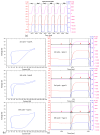

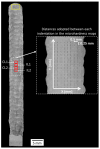

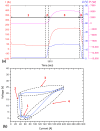
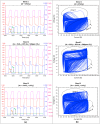



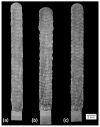


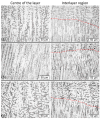


References
-
- Norrish J. Advanced Welding Processes—Technologies and Process Control. 1st ed. Woodhead Publishing Limited; Cambridge, UK: 2006. pp. 58–73.
-
- Nobrega G., Souza M.S., Rodríguez-Martín M., Rodríguez-Gonzálvez P., Ribeiro J. Parametric Optimization of the GMAW Welding Process in Thin Thickness of Austenitic Stainless Steel by Taguchi Method. Appl. Sci. 2021;11:8742. doi: 10.3390/app11188742. - DOI
-
- Tasalloti H., Kah P., Martikainen J. Effects of welding wire and torch weaving on GMAW of S355MC and AISI 304L dissimilar welds. Int. J. Adv. Manuf. Technol. 2014;71:197–205. doi: 10.1007/s00170-013-5484-x. - DOI
-
- Scotti A. Mapping transfer modes for stainless steel gas metal arc welding. Sci. Technol. Weld. Join. 2000;5:227–234. doi: 10.1179/136217100101538254. - DOI
-
- Hertel M., Niese J., Rose S., Häßler M., Füssel U., Uhrlandt D. Experimental and numerical investigations into the influence of the shielding gas composition on the GMA spray arc process. Weld. Cut. 2015;14:234–241.
Grants and funding
LinkOut - more resources
Full Text Sources
Research Materials

